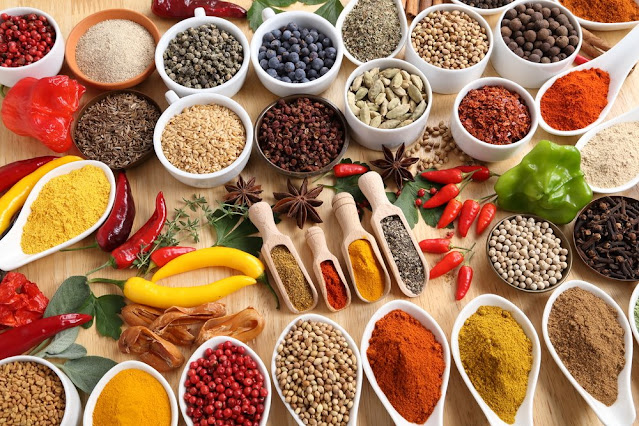 |
| Specialty Food Ingredients |
The Rise of Specialty Ingredients
Specialty food ingredients have seen a massive rise in popularity over the past
decade. As consumers have become more health-conscious and adventurous in their
tastes, they have driven the demand for unique, high-quality ingredients from
around the world. Food manufacturers have responded by developing innovative
products featuring specialty ingredients to attract these discerning buyers.
Exotic Fruits and Vegetables
One of the fastest growing segments is exotic fruits and vegetables. These
unique superfoods from various regions offer nutrients and flavors not commonly
found in mainstream produce. Some examples include acai berries from South
America, known for their antioxidant and energy-boosting properties. Baobab
fruit powder from Africa contains six times the vitamin C of oranges.
Mangosteen from Southeast Asia has anti-inflammatory xanthones. Turmeric, long
popular in Indian cuisine, is garnering attention for its curcumin
anti-inflammatory compounds. Kale, once an unusual green, has become mainstream
due to its reputation as a nutrition powerhouse. Food companies are formulating
juices, powders and snacks with these exotic superfoods to attract
health-conscious shoppers.
High-Quality Oils and Fats
Cooking oils and culinary fats have evolved well beyond vegetable, canola and
olive oil. Artisanal oils pressed from unique seeds and nuts offer novel flavors
and attributes. Avocado oil has a high smoke point, making it ideal for
cooking. Pumpkin seed oil is prized for its zinc and magnesium content. Coconut
oil contains beneficial medium-chain triglycerides. Nut butters made from
almonds, cashews and macadamias are gaining popularity as sandwich spreads.
Ghee and clarified butter impart a rich, complex flavor to foods. Grass-fed
butter delivers Omega-3s. These Specialty
Food Ingredients oils and fats command premium prices from consumers
seeking clean, nutrient-dense ingredients.
Dynamic Herbs and Spices
While standard herbs and spices like oregano, basil, cinnamon and black pepper
remain staples, global cuisines have introduced dynamic new seasonings.
Turmeric, ginger, cardamom and saffron have entered the American mainstream.
Exotic varieties include nigella, sumac, berbere and zaatar blends from Africa
and the Middle East. Horseradish, wasabi and yuzu bring Japanese flavors to
Western palates. Sichuan peppercorns deliver an unusual numbing sensation when
paired with other Asian seasonings. Kombucha-inspired drinks use medicinal
herbs like reishi mushrooms. Adaptogenic herbs touted for wellness, including
ashwagandha, holy basil and rhodiola, are popular supplements and ingredients.
This culinary exploration fuels demand for a wide assortment of global herbs
and spices.
Artisanal Specialty Proteins
While commodity meats still dominate American diets, specialty proteins appeal
to health-conscious flexitarians and carnivores seeking variety. Grass-fed and
pasture-raised beef and bison offerCLA and omega-3s. Free-range heritage
chickens and turkeys have higher nutritional profiles than industrially farmed
birds. Wild caught and sustainably farmed fish like arctic char and diver
scallops supply seafood lovers. Plant-based proteins including tempeh, edamame,
pea and lentil-based meats attract vegans and vegetarians, as do nut-based
products like cashew cheeses. Artisanal protein purveyors market their niche
products emphasizing humane practices and environmental sustainability to
command premium pricing.
Naturally Fermented Ingredients
Fermented foods have emerged from obscure health food store shelves to gracing
the shelves of mainstream supermarkets. Kimchi, sauerkraut and other cultured
veggies supply beneficial probiotics while enhancing the flavors of dishes.
Kombucha, kefir and yogurt drinks incorporate beneficial bacteria. Miso and
nutritional yeast add savory, umami flavors in place of salt. Chocolate,
coffee, vinegars and hot sauces undergo wild, natural fermentation using exotic
cultures for distinctive tastes. Beverage brands infuse drinks with kombucha or
other cultures. Pickles, condiments, breads and more undergo delicate
fermentation processes. As consumers seek to bolster their gut microbiomes
through diet, the demand keeps growing for these health-promoting fermented
foods.
Innovative Sweeteners
While sugar remains the most prominent sweetener worldwide, alternatives have
grown significantly in the specialty market. Maple syrup, honey and molasses
bring subtle flavors beyond sugar’s one-dimensional profile. Stevia and
allulose supply zero-calorie sweetness. Monk fruit extract is a natural
no-calorie alternative. Yacon syrup comes from a Peruvian root with prebiotic
fibers. Coconut sugar offers a less refined option than cane sugar. Chefs and
formulators explore their attributes to create distinctive desserts, baked
goods, sauces and beverages with cleaner labels. Brands catering to the keto,
paleo and diabetic markets especially rely on innovative natural sweeteners.
Their availability has created an expansive range of reduced sugar and
sugar-free specialty products.
The Future Looks Bright
As global tastes continue diversifying and health awareness rises, the demand
for unique, high-quality specialty food ingredients will keep growing. Food
entrepreneurs and brands will rise to meet this demand through innovative
applications and formulations. Traditional ingredients will find new popularity
through preparations honoring their rich culinary histories. Exotic superfoods,
artisanal proteins and naturally fermented offerings will further penetrate the
mainstream. Overall, the incredible diversity and specialization within the
specialty food ingredients market points to a bright future ahead.
Tags
Food and Beverages
